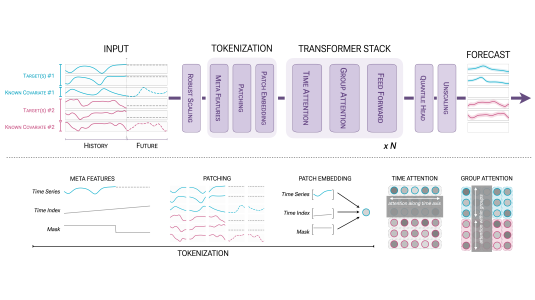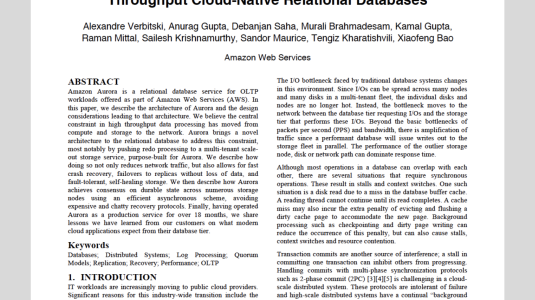One ongoing challenge faced by online retailers is how to optimally select the subset of fashion products to offer and how much inventory to procure before the start of the selling season. Deciding which subset of products to offer from a larger catalog of products is known as the assortment optimization problem. Assortment optimization and inventory planning for fashion products is made complex not only because of the need to forecast demand months in advance for new products, but also because customers may choose to substitute between different products if their first choice is not available. In the online world, an additional complexity is that customers interact with the website in a very different way than the way they purchase in brick-and-mortar stores.
“Addressing assortment and inventory planning together is a hard problem around which we have limited published literature, and limited applied solutions in industry,” says Salal Humair, a senior principal scientist in Amazon’s Supply Chain Optimization Technologies (SCOT) organization.
Now, thanks to ideas sparked in part by a former Amazon intern, a team of scientists at Amazon and Columbia University have taken significant steps toward developing a practical solution for this highly complex problem.
“We wanted to develop a scientific way to solve this very hard problem which is implementable and scalable in practice,” says Humair, who is responsible for developing optimization models for Amazon’s supply chain planning decisions.
The result is a paper that published in May 2021 which Humair co-authored with other Amazon scientists and university collaborators: “Joint Assortment and Inventory Planning for Heavy Tailed Demand”.
In the paper, the authors describe an approach that “balances expected revenue and inventory costs by identifying a subset of products that can pool demand from the universe of products, without excessively cannibalizing revenue due to the substitution behavior of customers.” The authors “also present a multi-step choice model that captures the complex choice process in an online retail setting, usually characterized by a large universe of products and a heavy-tailed distribution of mean demands.”
The project originated after Omar El Housni, then a graduate student at Columbia University, had completed two internships in SCOT. Inspired by his experience, he and Vineet Goyal, a professor in the Industrial Engineering and Operations Research Department at Columbia, developed a research proposal with their Amazon partners to address assortment and inventory planning together. Goyal, who is also an Amazon Scholar, focuses his research on sequential decision problems under uncertainty.
Ali Sadighian, a senior science manager at SCOT who had been El Housni’s manager during his internship, worked on the proposal with Goyal, El Housni and Humair. Goyal then applied for and received a 2018 Amazon Research Award, which helped fund another of Vineet’s students, Omar Mouchtaki, to work on the paper. Mouchtaki also interned at Amazon.
“If the internships hadn't happened, we would not have explored this problem,” says Goyal. Sadighian notes that Amazon science interns are exposed to a wealth of problems that they often continue to think about even after the end of the experience, which was the case with El Housni. “When you expose the right person to the right domain, you get these great collaborations,” says Sadighian.
Although the research in the paper did not rely on Amazon data, its conclusions are relevant to the company’s operations.
“We wanted to create an approximation of reality that is useful for Amazon too,” says Sadighian. “So, it doesn't need to be based on Amazon data, but it needs to somewhat reflect reality, and how you present a plausible approximation of reality as it pertains to Amazon is a tough problem.”
Amazon Science asked Sadighian, Goyal, and Salal three questions about how their group came up with a model that successfully captures some of the complexities of the customer’s decision-making process and informs inventory planning for products that can be easily substituted for one another.
Q. Why is it particularly challenging to predict the demand for substitutable products and how does Amazon’s scale add to the complexity of this problem?
Goyal: When you have substitutable products, especially at the scale of Amazon, the demand of each individual product actually depends on what else you are offering. The demand depends on what selection you carry and the number of selection possibilities is enormous at Amazon scale. So that is the underlying complexity in modeling demand for substitutable products.
There is another complexity addressed in this paper. Even if the demand model is known, planning for the inventory is still a complicated problem because of the substitution happening in a dynamic manner.
Let's say we offer three types of chocolate with different cocoa percentages: 90%, 80%, and 70%. The customers all prefer 90% the most, but will substitute to chocolates with lower percentages of cocoa if 90% is not available. We start with enough inventory for all of them. In the beginning, only 90% chocolate will sell. Once it runs out, 80% sells and then 70%. So, the demand of each product will depend on what other products still exist in the selection and this is a dynamic process.
Sadighian: It is not easy to develop a tractable model for the behavior of customers who, in the presence of a product, have one behavior, and in the absence of that product, have other behaviors. Now, consider that sometimes the same product might have different functions for different customers, and thence customers might go in different directions to substitute them.
Humair: If you have three products and their demand is independent, you forecast every one of them and the sum of their demands will be the sum of the individual forecasts. But, in this case, what's happening is that if I have two products, and I'm adding a third, depending on which third I add, the forecast for all three will change. I can create a number of potential subsets and every subset will have a different forecast for each one of the items depending on which other items are put in that subset. That leads to an exponential number of possibilities for forecasts. It depends on the subset of the catalog and number of subsets is astronomically large.
Q. How are you able to capture within this model the complex choice process of the customer in an online retail setting?
Humair: The process by which customers make choices on the Amazon Store is extremely complex. Describing that process in mathematical form is one problem. Now the second problem is, if that process is so complicated, we don't want the assortment and inventory optimization model to be so tied into that complexity. One of the clever approaches we took is that we put an abstraction layer between the customer choice process and the problem of what subset and how much to buy. And the way we do that is building on something that Vineet has really pioneered in his research. It's called a Markov chain choice model.
Goyal: This Markov chain choice model is defined by a substitution matrix: What is the probability of substituting to another product if your first choice is not available? So, although the choice process itself is complex, we abstracted away the complexity using this substitution matrix. And therefore, we're able to design an algorithm that does not really change with the complexities of the choice process. Tomorrow, we may introduce another novelty in the model that captures reality better in the choice process, but we still would be able to use the same algorithm, because there's this abstraction layer that allows us to go from any model on the customer choice side to the optimization algorithm on the assortment and inventory side.
Sadighian: The way I think about it is that, whenever you make a product-purchase decision, you have a large number of signals thrown at you. But we should realize that if we focus on a few crucial pieces of information, the other details become less relevant. To take the chocolate example: the color, the shape, all of those may be important. But at the end of the day, just tell me (Ali) the cocoa percentage and maybe that's the most important thing for me. The beauty of an abstraction is that it tells you: “Relax, you don't need to throw in everything and the kitchen sink to make a decision. You only need to know a few pieces of (potentially synthesized) crucial information.”
Q. What is unique about this model and what are the limitations of previous models that this work overcomes?
Goyal: Prior work in this area relied on the structural form of the choice process. So, the assortment optimization algorithms used the properties of the choice process. And if the modeling of that choice process changes slightly, that optimization algorithm doesn't remain usable. So, abstracting it away gives us this significant benefit, and I think is one thing unique to this work.
Humair: What we have done is taken the first step towards solving a more complicated version of the assortment and inventory optimization problem, which is a sequential decision-making problem. You solve the same problem as we are doing in this paper, but you do it with only a limited amount of information, i.e., the catalog of the current vendor. And then you go to the next vendor and decide the additional assortment. What is very promising about this work is that it gives you the stepping stone to actually solving real and practical problems, in a manner that each step forward can build on the past work rather than having to throw it away.
Sadighian: This is the very first step, but maybe one of the most concrete first steps toward solving practical assortment and inventory problems. These first steps either put you on the right path, which we hope is the case, or they send you into the weeds. There is a tremendous amount of work left to be done. But the fact that it shows you the light at the end of the tunnel is maybe the biggest piece of the puzzle for me coming out of this.
I’d like to highlight the genesis of this work. It all started with Omar El Housni interning with us while he was Vineet’s student. Another student of Vineet, Omar Mouchtaki, who interned with us this year is also working on this problem. These relationships demonstrate that if you pick a rich area, there are many avenues to be explored. Omar El Housni is now a professor at Cornell Tech and I suspect he will continue to work on this area. Even if there are bits and pieces that we cannot talk about because they are Amazon internal research, the external evidence of our work (this paper) is out there and our colleagues are continuing to work on it. There is so much left to be done that, that I don't see how we can afford not to continue working on it.



















